To make a resume for your first job, emphasize transferable skills, volunteer work, internships, or extracurricular activities that showcase your abilities and dedication. You can also include relevant sections and quantifiable data when possible.
Proofread your resume carefully and make your contact details prominent. There are different types of resumes that are suitable for a first job, such as reverse-chronological or functional formats. If you have no job experience, focus on experiences and skills gained from activities, school work, and independent projects that are transferable or applicable to the job you’re applying for.
Laying The Groundwork
Before diving into the process of creating your first job resume, it’s essential to lay the groundwork by assessing your skills and interests and understanding the job market.
Assessing Your Skills And Interests
Start by evaluating the skills and interests you possess. Consider your strengths, such as communication, organization, or problem-solving abilities, and think about activities or subjects that genuinely interest you. These elements will form the foundation of your resume and help you tailor it to the specific job you’re applying for.
Understanding The Job Market
Research the job market to gain insights into the types of roles available and the skills and qualifications employers are seeking. This will enable you to align your resume with industry expectations and stand out as a potential candidate. Understanding the job market also involves identifying the most relevant resume format for your first job, whether it’s reverse-chronological or functional, based on your unique circumstances.
Essential Resume Components
When creating your first resume, it’s important to include essential components that will make a strong impression on potential employers. These components include your contact information, education section, and other relevant details that highlight your qualifications and abilities.
Contact Information
Your contact information is the first thing employers look for when reviewing a resume. It should be prominently placed at the top of the page and include your full name, phone number, email address, and optionally your physical address.
Education Section
The education section of your resume should highlight your academic achievements. Include the name of your high school, its location, and your expected graduation date. You can also add any relevant coursework, academic honors, or extracurricular activities that demonstrate your skills and dedication.
Highlighting Your Education
When creating a resume for your first job, highlighting your education is crucial to showcase your academic background and qualifications. This section allows you to emphasize relevant coursework and academic achievements that demonstrate your skills and knowledge, even if you have limited work experience.
List Of Relevant Coursework
Listing relevant coursework on your resume provides insight into the specific subjects and disciplines you have studied that are directly related to the job you are applying for. This demonstrates your expertise in relevant areas and can make your resume stand out to potential employers.
Academic Achievements
Including your academic achievements on your resume highlights your successes in your educational pursuits. This could encompass honors, awards, scholarships, or exceptional performance in specific courses or projects. These achievements serve as evidence of your dedication and capability, adding value to your resume.

Credit: www.reddit.com
Showcasing Non-work Experience
When creating a resume for your first job, it’s important to showcase your non-work experience. Highlight transferable skills, volunteer work, internships, and extracurricular activities that demonstrate your abilities and dedication, even if you don’t have traditional work experience. This will make your resume stand out and show your potential to employers.
When it comes to creating a resume for your first job, showcasing non-work experience can be just as important as highlighting your professional skills. Employers want to see that you are a well-rounded individual with a variety of experiences and interests. In this section, we will explore two important categories of non-work experience: volunteer work and community service, as well as extracurricular activities.Volunteer Work And Community Service
Volunteer work and community service are great ways to showcase your dedication and commitment to helping others. When listing this type of experience on your resume, be sure to include the name of the organization, your role, and any specific tasks or accomplishments. For example:- Volunteer, Habitat for Humanity, Austin, TX
- Assisted in building homes for low-income families
- Managed tools and equipment inventory
- Community Service, Meals on Wheels, Austin, TX
- Delivered meals to homebound seniors
- Assisted in fundraising efforts
Extracurricular Activities
Extracurricular activities can also be valuable additions to your resume, especially if they demonstrate leadership, teamwork, or other skills relevant to the job you are applying for. Some examples include:- President, Student Government Association
- Managed meetings and events
- Advocated for student needs
- Captain, Varsity Soccer Team
- Developed team strategies
- Collaborated with coaches and teammates
Developing A Professional Summary
Developing a professional summary is essential when creating a resume for your first job. Highlight your transferable skills, volunteer work, and any relevant coursework or extracurricular activities to showcase your abilities and dedication. Emphasize your strengths and make sure to tailor your resume to the specific job requirements to stand out from other applicants.
Crafting A Compelling Objective
Developing a professional summary is an essential part of creating a strong resume that highlights your relevant skills and experiences. One key element of the summary is crafting a compelling objective that showcases your career goals and what you can offer to the employer. Use strong action words and keep it concise, not more than 2-3 sentences. Remember, the objective should be tailored to the specific job you are applying for, so make sure to read the job description carefully and include relevant keywords.Tailoring Your Summary To The Job
Tailoring your summary to the job is crucial to make your resume stand out. One way to do this is by using specific keywords and phrases from the job description in your summary. Highlight your relevant skills and experiences that match the job requirements. It’s also important to keep the summary concise, not more than 3-4 sentences. Use bullet points to make it easy to read and emphasize your relevant achievements and qualifications.Formatting Your Summary
When formatting your summary, make sure it stands out visually, use bold, and italic fonts to highlight important information. Use bullet points, ordered or unordered lists to make it easy to read. Try to keep it simple and avoid using complicated language or industry jargon. Remember, the summary is the first thing the employer will read, so make it count!Skills And Abilities
Creating a resume for your first job can be daunting, but by highlighting your skills and abilities, you can make a strong impression. Emphasize transferable skills, volunteer work, internships, or extracurricular activities that showcase your abilities and dedication. Tailor your resume to the job description and include relevant sections to stand out.
Skills and Abilities are crucial components of a resume, especially for first-time job seekers. Employers want to know what skills and abilities you possess that would make you a valuable addition to their team. Therefore, it is important to highlight your transferable skills, both soft and hard skills, in your resume. Identifying Transferable Skills Identifying transferable skills is critical when creating a resume for your first job. These are skills that you have developed in previous experiences that can be applied to the job you are applying for. For example, if you worked as a cashier in a retail store, you may have developed skills in customer service, communication, and time management. These skills can be applied to a variety of jobs, such as a receptionist or a customer service representative. Including Soft and Hard Skills Soft skills, such as communication, teamwork, and problem-solving, are important to include in your resume as they demonstrate your ability to work well with others and adapt to new situations. Hard skills, on the other hand, are specific technical skills that are necessary for the job you are applying for. For example, if you are applying for a job as a graphic designer, you may include skills such as Adobe Photoshop and Illustrator. It is important to include a mix of both soft and hard skills in your resume to demonstrate your well-rounded abilities. However, make sure to tailor your skills section to the job you are applying for. Read the job description carefully and include the skills that match the requirements of the job. In conclusion, the skills and abilities section is a critical part of your resume. Make sure to identify your transferable skills and include a mix of both soft and hard skills that match the requirements of the job. A well-crafted skills section can make all the difference in landing your first job.The Art Of Formatting
Creating a resume for your first job can be challenging. Follow these guidelines to make a standout resume: emphasize transferable skills, include relevant coursework or extracurricular activities, and highlight any volunteer work or internships. Make sure to showcase your abilities and dedication to catch the employer’s attention.
Choosing The Right Resume Layout
The layout of your resume is the first thing that hiring managers notice. It is important to choose a layout that is both professional and visually appealing. There are three types of resume layouts: chronological, functional, and combination.Visual Appeal And Readability
Visual appeal and readability are critical when it comes to formatting your resume. Use a font that is easy to read and has a professional look. Arial, Times New Roman, and Calibri are popular choices. Also, ensure that your font size is between 10 and 12 points. When it comes to the overall design of your resume, keep it simple and clean. Use bullet points, bold text, and headings to make it easy for the reader to navigate. Avoid using images or graphics that can distract from the content of your resume.Formatting Tips
Here are some formatting tips to keep in mind:- Use a one-inch margin on all sides of the page
- Use consistent spacing throughout the document
- Ensure that your name and contact information are prominently displayed
- Include relevant sections, such as education, work experience, and skills
- Use active verbs to describe your accomplishments and responsibilities
- Proofread your resume carefully for any errors or typos
Final Touches
After carefully crafting the content of your resume, it’s essential to give it the final touches that will ensure it stands out to potential employers. Final touches involve proofreading and editing your resume to perfection and using resume examples and templates to ensure a professional and polished appearance.
Proofreading And Editing
Proofreading and editing your resume is crucial to eliminate any errors and ensure it effectively communicates your qualifications and experiences. It’s important to check for spelling, grammar, and punctuation mistakes, and to ensure the formatting is consistent throughout the document. Additionally, seek feedback from a trusted friend or mentor to gain valuable insights and suggestions for improvement.
Using Resume Examples And Templates
Utilizing resume examples and templates can provide valuable guidance and inspiration as you finalize your resume. These resources can help you understand the best practices for formatting, organizing, and presenting your information. However, it’s important to customize any template or example to reflect your unique skills, experiences, and qualifications, ensuring that your resume remains authentic and tailored to your individual strengths.
Advanced Tips
When creating a resume for your first job, incorporating advanced tips can make your application stand out. Here are some advanced strategies to enhance your resume.
Customizing For The Application
One of the most effective ways to make your resume stand out is to customize it for each job application. Tailoring your resume to the specific job description and company can greatly increase your chances of getting noticed. Highlight your relevant skills, experiences, and achievements that align with the job requirements.
To do this effectively, carefully analyze the job posting and identify the key skills and qualifications sought by the employer. Then, incorporate those keywords and phrases into your resume to demonstrate that you are a strong fit for the position.
Leveraging Networking
Networking can play a crucial role in securing your first job. Utilize your network of contacts, including family, friends, teachers, and professionals in your desired industry. They can provide valuable insights, advice, and even potential job leads.
When networking, be proactive in reaching out to individuals who can offer guidance or refer you to job opportunities. Attend industry events, career fairs, and professional meetups to expand your network. Engage in meaningful conversations and express your enthusiasm for entering the workforce.

Credit: www.coursera.org
Practical Considerations
When creating a resume for your first job, practical considerations play a crucial role in the submission and presentation of your resume. Understanding the different formats for digital submission and the importance of printing physical copies can make a significant impact on the success of your job application.
Digital Submission Formats
When submitting your resume digitally, it’s essential to consider the preferred file format of the employer or the application platform. Most commonly accepted digital formats include:
- PDF (Portable Document Format)
- Microsoft Word (.doc or .docx)
- Plain Text (.txt)
Printing And Physical Copies
While digital submission is prevalent, there are instances where having a physical copy of your resume is necessary. When attending job fairs, interviews, or networking events, bringing printed copies of your resume can leave a lasting impression. When printing your resume, consider the quality of the paper, and ensure that the text and formatting are clear and legible.

Credit: novoresume.com
Frequently Asked Questions
How Do I Write A Resume For My First Job With No Experience?
To create a resume for your first job with no experience, focus on highlighting transferable skills, volunteer work, internships, or extracurricular activities that showcase your abilities and dedication. Emphasize relevant sections, such as education, and include quantifiable data when possible.
Proofread your resume carefully before submitting. Consider using a reverse-chronological or functional resume format, depending on your circumstances. Remember to tailor your resume to the job you’re applying for and demonstrate how your skills and experience are applicable.
How To Make A Resume As A 14-year-old?
To make a resume as a 14-year-old with no work experience, focus on showcasing your skills, volunteer work, internships, and extracurricular activities. Emphasize transferable skills that demonstrate your abilities and dedication. Make your contact details prominent and include relevant sections.
Use a reverse-chronological or functional resume format depending on your situation. Proofread your resume carefully and include quantifiable data when possible.
What Type Of Resume Is Best For First Job?
For a first job, a reverse-chronological resume highlighting education and relevant experience is best. Alternatively, a functional resume focusing on transferable skills is also effective. Emphasize skills, volunteer work, and extracurricular activities. Tailor the resume to the job description, and highlight achievements and quantifiable data when possible.
How Do I Make A Resume If I Never Had A Job?
To make a resume with no job experience, focus on transferable skills and relevant activities. Highlight volunteer work, internships, and academic projects that showcase your abilities. Emphasize how these experiences and skills are applicable to the job you’re applying for.
Conclusion
Creating a resume for your first job can be a daunting task, but with the right guidance, it can be made easier. Remember to focus on transferable skills, highlight any relevant experience, and showcase your dedication and abilities. Tailor your resume to the job description, use a suitable resume format, and proofread carefully before submitting.
With these tips, you’ll be on your way to impressing potential employers and landing your first job. Good luck!

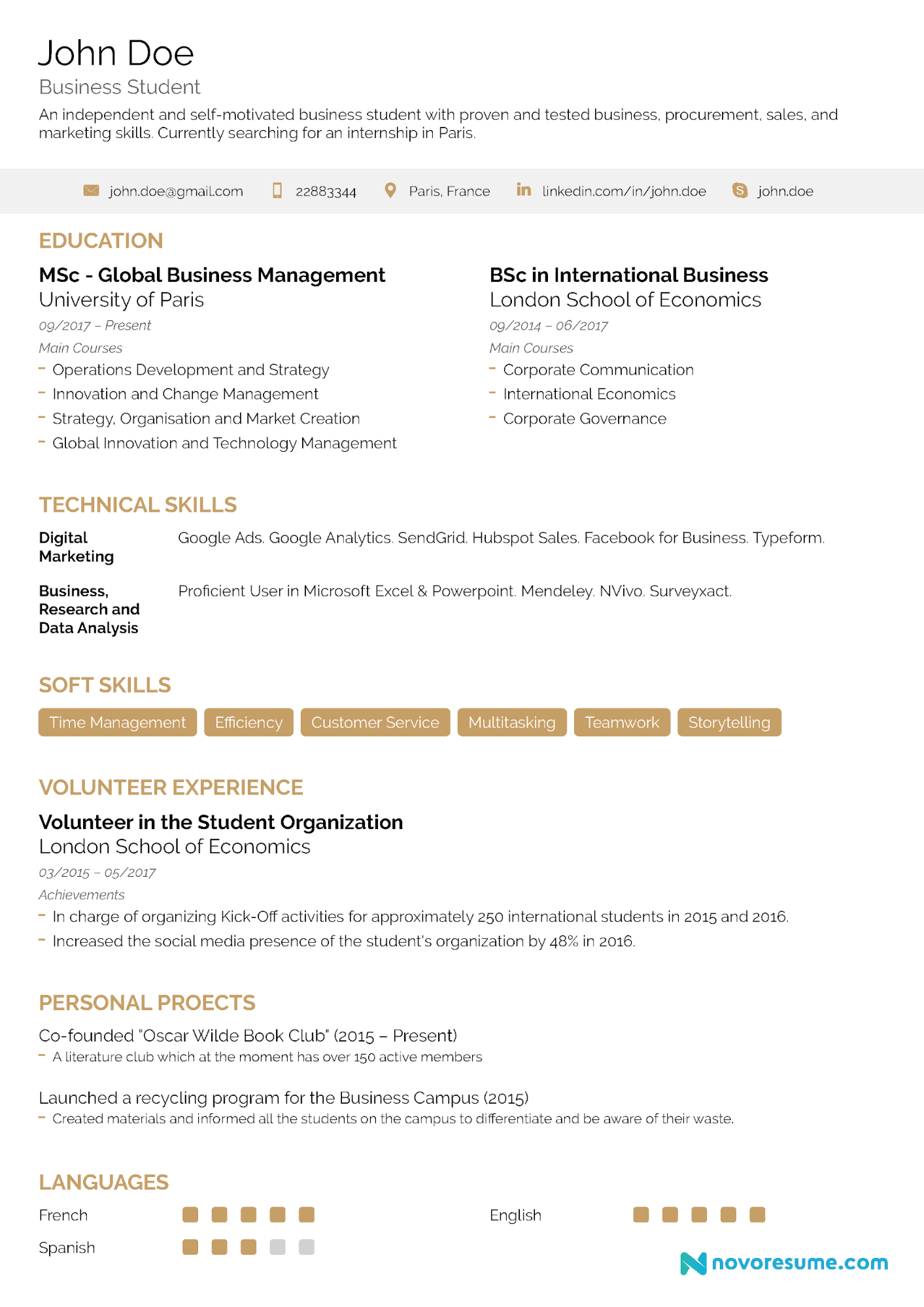


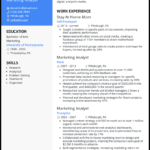
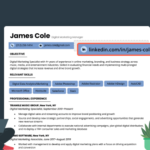
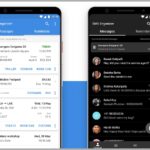
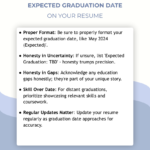
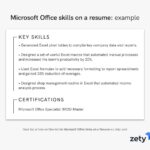
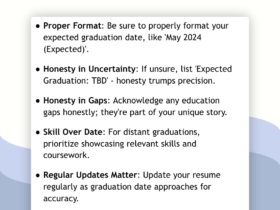
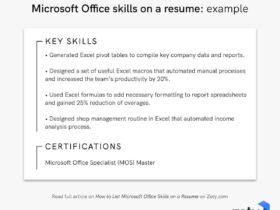
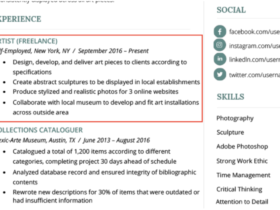
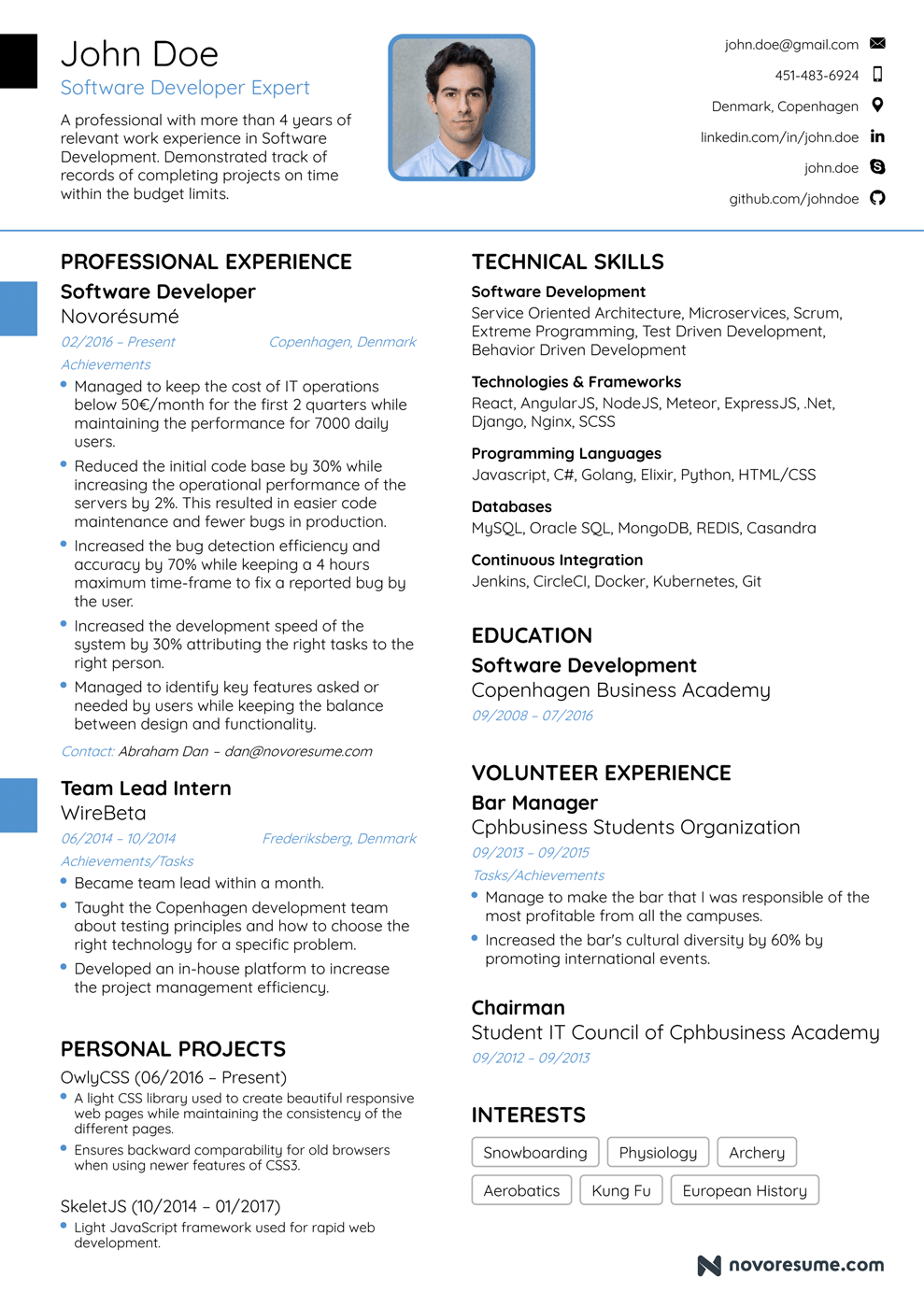
Leave a Reply